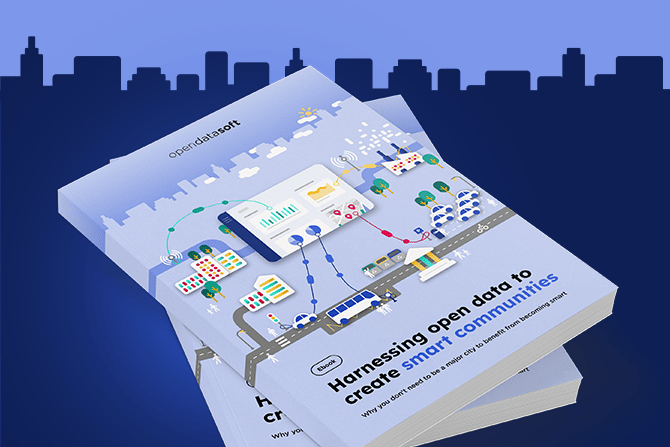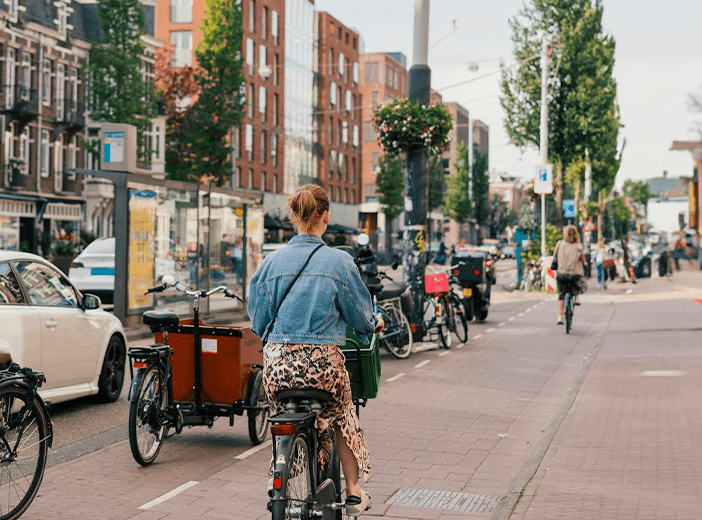From Smart Cities to Smart Enough Cities
Ben Green studies the implementation and impacts of data science in local governments, with a focus on “smart cities” and the criminal justice system. His book, The Smart Enough City: Putting Technology in Its Place to Reclaim Our Urban Future, was published in April 2019 by MIT Press.

You are a PhD candidate at Harvard where you study the implementation and impact of data science in local governments. What exactly does that entail?
My PhD at Harvard University is in Applied Mathematics. My research, however, is pretty interdisciplinary and focuses on the social impact of technology and how we conceive of technology’s role to make social impact and improve society.
My work takes a couple of different approaches from developing algorithms in local governments as a data scientist to developing policies and policy recommendations to trying to understand what prompts city managers to implement technology as a solution to social problems. That is really the core organising idea behind my book and my dissertation – trying to understand why we have this urge to increasingly use technology to solve social problems and whether that is an effective solution.
Your background is in Maths and Physics. How did you get interested in urban and public policy issues?
Even while I was doing my maths and physics research, I always had been doing work at city governments. I was always interested in urban planning and urban policy so a lot of my coursework was in that area. I spent a year working for the New Haven Department of Transportation working on cycling and traffic policies as well as on parking technology. I was always interested in questions such as how the design of our physical space shapes the way we live and impacts our economy as well as the social structure of the communities we live in. Over the years, my work has increasingly shifted into that direction and I began working as a data scientist for city governments to bring in that perspective of thinking about how technology is and could be implemented.
Through those experiences, I began to think about issues beyond the mere technical problems that cities face and got interested in the, often more significant and interesting, policy and ethical issues. I came in as a technologist but eventually the social impact of urban technologies struck me as being more important than the technical questions themselves.
Tell us more about a data-related urban policy project that you have worked on in the past?
One of the first projects that I worked on when I was at the New Haven Department of Transportation was an upgrade of the parking meter technology. We needed a database that knew where every single parking meter was and what the rates and hours were so that the cloud based system could properly calculate and account for all of that.
What was interesting is that the city actually didn’t have a comprehensive dataset of that and it required me, as an intern, spending a couple of days actually biking around town trying to identify exactly which parking meters were where, what their ID numbers were, and so on. This was an early lesson on how even very simple tasks involving technology and data often hinge on having a well-curated data set. It was not fundamentally a problem of having the most advanced technology but it was a problem of lacking the institutional processes and practices to maintain it. That was a very interesting lesson and something which a lot of different cities around the world have encountered: a seemingly simple issue can be actually quite difficult just because of relatively mundane data practices.
Your work focuses to a great extent on smart cities. You recently published a book entitled “The Smart Enough City” in which you reevaluate the connection between technology and urban innovation. Can you tell us a little bit more on this?
Of course! I think that the smart city, as we conceive of it today, lacks a holistic perspective. The common understanding of what it means to become a smart city today does not necessarily include a holistic approach to solve a certain issue. In my book, I describe smart cities as seeing most problems exclusively through “tech goggles”, meaning that there is a tendency of seeing every single social challenge only in terms of technology. Issues are diagnosed as being technological in nature and the solutions to these issues are also seen as exclusively technological.
Now, this is not to say that technology is not important or that it cannot have a positive impact on urban policies. On the contrary! I propose a framework called the “smart enough city” in which city managers still embrace technology and recognize that it has a role to play. The key is to understand a problem with all of its complexities and intricacies and think about the possible solution to a given problem in broader terms. They are motivated by a broader set of civic values that transcend technology alone. In this framework, technology is a tool and a means to achieve better policies but it is not the only one and it does not have to be used to solve every single issue. The question is not about using ever more advanced technology but about using the right technology in the right way to contribute to better policies.
What can some of the dangers be for a city that sees the challenges it faces exclusively through “tech goggles”?
There are problems that smart cities are trying to address which are often misunderstandings of the actual problems. There are of course real challenges that cities face and that is an important starting point. But, a smart city approach exclusively based on technology is often unable to solve these problems and can even exacerbate them for certain populations. One example is that of autonomous vehicles. Clearly, mobility is an important aspect of any city and improving it is an important job for any city government. The question is what sorts of technologies and other policies can help us do that.
For instance, autonomous vehicles propose a way to end gridlock and congestion with smart cars that are coordinating their behavior. This solution on its own doesn’t hold up to scrutiny if you think about how urban design and traffic actually play out. Autonomous vehicles are unlikely to provide all the necessary benefits but more importantly, that approach is going to remove resources and prioritisation from other modes of transportation and uses of public space, which is going to be detrimental to pedestrians and cyclists and to anyone who relies on public transit and doesn’t rely on private vehicles. The idea that we are going to solve this problem with this particular technology makes it harder to pursue other forms of solving the same problem. There are many other ways of improving mobility such as redesigning public spaces or investing in buses and trains.
When can technology actually be useful for a smarter city approach?
There are definitely less flashy operational ways in which having good data maintenance and quality can be really effective. There are lots of ways in which better information can help to inform policy. In New York for example, they have done a lot of work to better institute these practices, especially in the face of any emergencies, whether it is related to a hurricane or a public health epidemic. That is one of the stories I had the most fun reporting on.
A couple of years ago the city was facing a pneumonia epidemic and just did not have the data to know where to do the cleaning. In response to this challenge, the city has developed a number of different practices including this idea of data drills which consists in pretending that there is an emergency and getting a bunch of city officials in a room to think about how are we going to use data to solve this problem. The focus is less about the flashy ideas but instead about day-to-day operations as well as the general awareness that can come from having more information. It’s less about having tons of data than about organizing and having access to it and making sure that different department staff are fluent in how to use it and able to more effectively share that information with one another.
An increasing number of companies are developing products based on urban data, whether the data comes from smart city lights or a smart parking lot. How can cities bring this information into one place to determine what information could lead to better policies?
That is a huge question. It really has to start from an understanding of what the goals are and what you are trying to do. A lot of the cities I have observed go wrong because they collect a ton of information without having a sense of what they are trying to accomplish or what their goals are. By defining what they are trying to do they can much better determine the type of data that they should be collecting and how they use it.
Another important benefit of doing that type of goal setting is to deal with the dangers of privacy. Any conversation about data and smart cities needs to include a conversation about the privacy risks of collecting that data. One place that even well intentioned city governments go wrong is operating under the notion that more data is better than less data. More data does give access to more information but it also gives access to more information about citizens. It is not about collecting everything but about collecting the right data – trying to understand what they are trying to achieve and what data they need will help cities find the balance between minimizing risks for the public while maximising the benefits for the residents.
Can any city become smarter?
Any city can take advantage of technology and any city can improve what it means to live in that city and improve the lives of the public using technology. Cities of different sizes are going to have different capacities for this and even small cities are totally capable of beginning to think about what it means to use data and releasing open data. What is interesting is that a lot of great examples come from cities that you would not think of as being hotbeds of innovation.
One of the most inspiring stories I witnessed was in Columbus, Ohio. Columbus won the Department of Transportation Smart City Challenge about three years ago and they have been working to improve their transportation infrastructure. What was really impressive about their program was that it was not just focused on automated vehicles but was grounded in years of long term planning that the city had been doing to really understand what it wanted its urban space to look like in 20 or 30 years. They were driven by questions such as: What types of design and planning should be prioritized? How can equity and mobility be improved for low income populations in the city?
As a result, they did not just start from the perspective of technology but they started from a much deeper understanding of the complexities of the problem and a sense of what road they were trying to go down. They spent a long time working with the community and developing a number of responses to improve mobility which centers on better access to information, better wifi, on demand rides as well as considering ideas such as better child care — all getting to the barriers that prevent people from getting to a job interview, getting to a doctor’s appointment. They beat out 75 other cities such as Boston and Seattle to win that challenge.
What advice would you give to a city that is looking to improve the living conditions for its residents through better data management?
First of all, I would encourage the city to appreciate the full complexity of the problems that it is looking to address. It’s very easy when there is technology around to think that it can automatically solve the problem. The best way to get out of that is really trying to understand the problem by talking to communities and experts about what problems they care about and what the potential solutions are.
The second step would be to think about the institutional practices rather than the technology. Using data effectively is dependent on an institutional leadership that cares about having the tech infrastructure to manage that data and make sure that it is well curated. People across the city should be included in the process to understand the value of the data. It is really all about having an infrastructure as well as a culture of data appreciation, data use, and data sharing that will make technology effective. Even with small amounts of data you can do something great. It is really the quality of the data as well as the ability to integrate that data in policy and practice that will determine its usefulness and success.
Ben Green is a PhD Candidate in Applied Math at the Harvard School of Engineering and Applied Sciences and an Affiliate at the Berkman Klein Center for Internet and Society at Harvard. He studies the implementation and impacts of data science in local governments, with a focus on “smart cities” and the criminal justice system. His book, The Smart Enough City: Putting Technology in Its Place to Reclaim Our Urban Future, was published in April 2019 by MIT Press and is available online via the following link.




